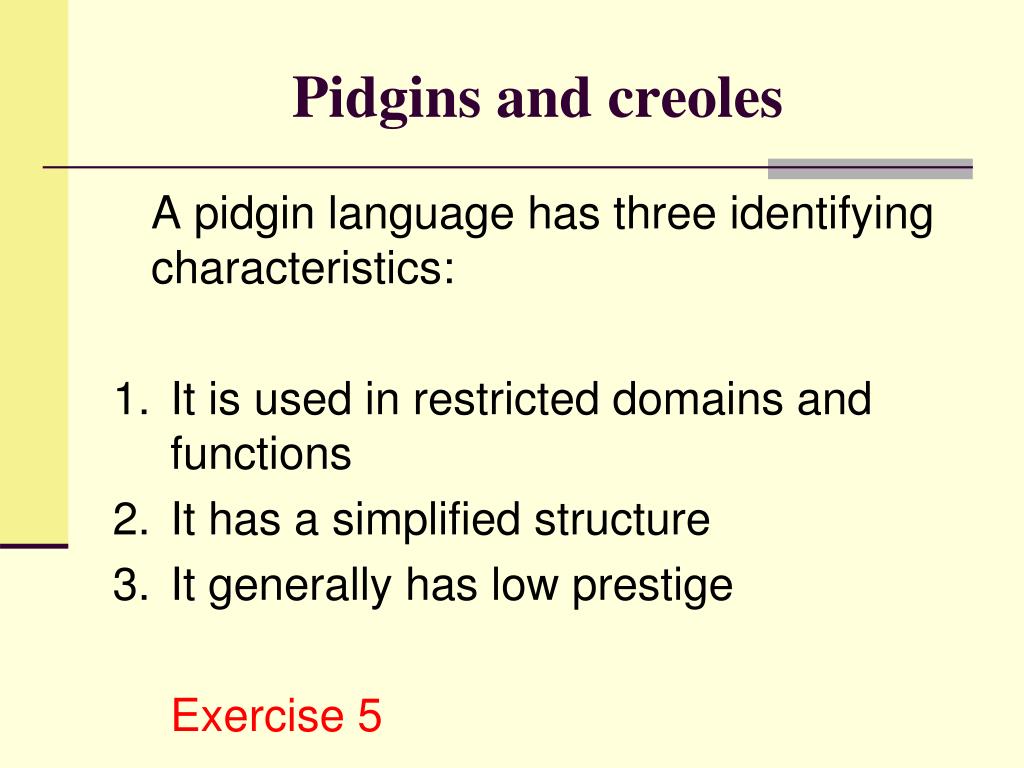
Since it is the first language of a group, creoles are used in many more areas of life and have a much richer structure.


There are also other differences between a pidgin and creole. Children grow speaking a creole as their first language. The validity of the theories put forward to explain the genesis and development of pidgin and Creole languages crucially depends on whether these theories can satisfactorily take into account the many, various and complex sociolinguistic circumstances under which the known pidgin and Creole languages came into being and developed. A creole is a pidgin that now has native speakers. chapters 5 and 6), there is little agreement that these could be used to determine whether a language is a Creole without reference to its sociolinguistic history. While one could draw up a list of structural features shared by most of the Atlantic Creoles (cf. structural complexity) do not distinguish them from other natural languages. The purely linguistic elements in the definition of Creoles (e.g. The crucial element in the definition of a Creole is also sociolinguistic: that it grew out of a pidgin (or possibly an unstable pre-pidgin) that had become nativized in a particular speech community.

reduction and simplification), but even the crucial quality of stability is claimed to depend on the sociolinguistic factor of tertiary hybridization. Some aspects of the definition of a pidgin are purely linguistic (e.g. Pidgins, for example, are defined in part by such sociolinguistic factors as their being no one's first language, their arising in a particular social context such as trade, and their evolving as the result of non-intimate social contact between groups of unequal power. Pidgin and Creole languages cannot be defined, nor can their genesis and development be understood, without taking into account the social factors that shaped them.


 0 kommentar(er)
0 kommentar(er)
